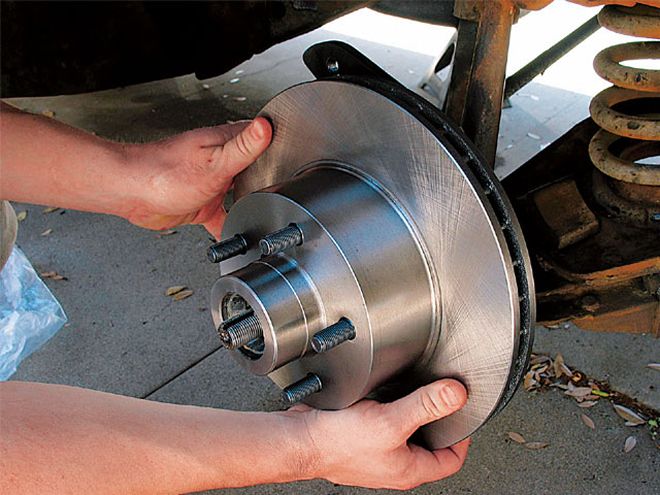

Driving any car on public roads these days can be a gamble, especially if you're behind the wheel of some choice vintage tin. Increased traffic congestion, faster speeds, and an IR (Idiot Ratio) that's off the charts all conspire to create a white-knuckle ride for all the wrong reasons. I know-I live in Southern California.
Driving defensively and knowing your car's limitations used to be enough to keep you out of trouble. That's not necessarily true anymore. Face it, the jerk in the Honda has never driven anything with drum brakes. He has no idea how much stopping distance your heap needs when he cuts you off on the exit ramp. As much as you might like to ram his coffee-can exhaust tip into his back seat, however, you don't want to do it at the expense of decades-old, impossible-to-replace American steel and chrome.
The point is, making sure your rod or custom can stop well is just as important as making it look cool or go fast, maybe even more so. That's why I decided to upgrade the brakes on my daily-driver '51 Plymouth before performing any "fun" mods.
With a stock flathead-six and three-speed drivetrain, the Plymouth is slow. Painfully slow. I spend most of my time cruising next to the freeway shoulder with the trucks. Problem is, the little wagon is also slow to stop. Painfully slow-to the tune of about 340 feet from 60-0 mph during recent testing. That's about three times the distance it took a slightly modified '94 Camaro to stop on the same day. That just won't cut it, not even in the slow lane.
To be fair, the stock drum brakes weren't exactly in top shape-lord knows when they had last been adjusted. After our testing I also discovered that only three were even functional-a previous owner blocked off the right rear brake line with a screw to "cure" a leaky wheel cylinder. Still, if I was going to get all dirty working on brakes, I wanted to improve on the stock stuff, at least up front.
Thankfully, the street rod aftermarket hasn't neglected '50s and '60s cars when it comes to driver-friendly upgrades. Disc brake kits and related parts are available for a wide variety of rides, even for oddball stuff like my Plymouth. In fact, I found several brake options from which to choose (the fact that Mopar suspensions are very similar on '37-54s helps make such parts more marketable).
Eventually I picked a combination of parts from Ply-Do, a company that specializes in vintage Mopars, and the stopping experts at Master Power Brakes. From Ply-Do I got the deluxe brake kit, which includes rotors, calipers and brackets, bearing adapters, bearings, seals, and hoses (basic kits with just bearing adapters and caliper brackets are also available). Master Power helped out with a brake pedal assembly, power booster, master cylinder, combination valve, and other related components (Master Power also offers a Mopar disc brake kit but requests you send in your spindles so they can assemble it in-house).
With parts in hand I set to work. There were a few stumbles along the way-some minor, others more significant, some self-induced, others a matter of circumstance. At least the biggest hurdle was anticipated. The folks at Master Power said their brake pedal/booster/master combo was designed to fit the Plymouth's original master cylinder location, but not with the stock drivetrain in place. The kit is intended for cars with updated running gear, which my car has yet to get. I opted to try it anyway. The problem is that the booster pushrod needs to run right through the stock transmission crossmember. My solution was to notch the crossmember and weld in a piece of steel tubing to accommodate the rod. After fine-tuning the bracket with some grinding and re-drilling the mounting holes, everything fit fine.
Take a look at the photos and captions for more specifics on this particular swap, and keep in mind that the process may be similar for other makes and models of '40s and '50s cars. Was it worthwhile? You better believe it. Official testing is forthcoming, but my seat-of-the-pants evaluation indicates a huge improvement. The new brakes give me much more confidence on the freeway, and R&C readers in SoCal will no longer need to feel so nervous when they see me in their rearview mirrors.